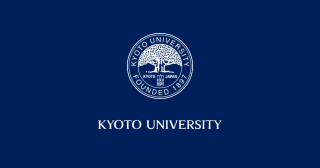Under the theme of "Living in history, living in the world -- The historical capital Kyoto: A discussion on how urban communities can be made sustainable, taking ideas from the history of Kyoto as a city and its lifestyles", a Kyoto University Spring talk event was held at Chionsha (Nakagyo-ku, Kyoto), which is a typical "machiya" or traditional Kyoto style timber townhouse.
The event was co-hosted by Kyoto University and Kyoto University Press, which publishes books about KU's latest academic achievements in order to share the university's research and educational results with the general public. In line with the theme, a "machiya" was chosen as the venue for the event, which included lectures and a forum. Some 70 persons, mainly from Kyoto City, participated.
Professor Jyuichi Yamagiwa, President of Kyoto University, attended the event to deliver an opening address, in which he stated: "Kyoto University is a window to the world. We seek to share our resources through events of this kind so that a broad cross-section of the public can benefit from our academic achievements".
In the first section of the event, Professor Ryohei Nishiyama from the Graduate School of Human and Environmental Studies delivered a lecture entitled "The beginning and end of Kyoto as a 'city' -- mainly concerning Heian-kyo, the historical capital Kyoto, around 1000 AD" -- in which he talked about the process of developing the "machiya" style in ancient Kyoto. Dr Aiko Takatori, Lecturer at the Graduate School of Engineering, followed up with "Living in 'contemporary' Kyoto". In this lecture, she discussed the characteristics of "machiya" in Kyoto as well as its universal and undisputed attractiveness, referring to some examples of houses that Dr Takatori, who is a qualified, first-class architect, had designed in the city.
In the second section, in line with the main theme of "Living in a history and living in the world", Professor Shuji Funo, Vice-President and Director of the University of Shiga Prefecture, summarized the preceding lectures by Professor Nishiyama and Dr Takatori with reference to some "gridiron" cities in Asia. Then, Professor Funo coordinated active discussion among Professor Nishitama, Dr Takaroti, and members of the audience. Topics discussed were the history and features of houses in Kyoto, including establishment of the "machiya" style during the Heian Era, some dramatic changes that ensued, and one of its enduring features in the form of the so-called "special gradation" that divides internal spaces from external spaces in a gradual, rather than a definitive, manner. The participants also discussed how those features could be applied to modern living and contemporary cities.

From left: Dr Takatori, Professor Nishiyama, Vice-President Funo, and President Yamagiwa

Inside the "machiya" venue





